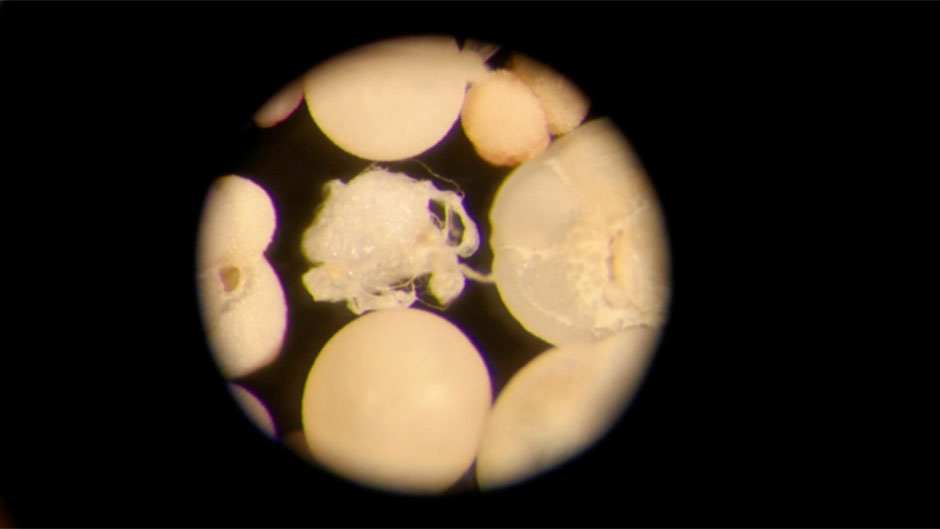A study by an international team of scientists uncovered new information about marine plankton, the tiny, globetrotting organisms commonly used to reconstruct past climate conditions. The findings can aid in improving our understanding of past global climate conditions.
Using a state-of-the-art biophysical computer model developed by University of Miami Rosenstiel School of Marine and Atmospheric Science scientist Claire Paris, called the Connectivity Modeling System, the researchers showed that some of the tiny ocean organisms, known as foraminifera, drifted significantly before falling to the seafloor and being fossilized. While others, may not have drifted much at all according to the currents in the region where they were found and the lifespan of the species.
“The model used in the study traced the temperature history of the planktonic forams drifting in the ocean as they grew their tiny shell,” said Paris, associate professor of ocean sciences. “It enabled the team to look at the origin of the shells that eventually sank to the seafloor."
The team discovered that some foraminifera are transported by currents along very long distances, up to thousands of kilometers. Their fossilized remains found in seafloor core samples reflect ocean temperatures that are significantly different from where they were found. They discovered that the effect of the drift could be up to 3° Celsius.
“The idea has always been that the critters record the temperature right above where they are found on the ocean floor,” says Erik van Sebille, lead author of the study and a climate scientist at the ARC Centre of Excellence for Climate System Science and Imperial College London. “However, these critters are so small that they are at the mercy of the currents. They could easily have drifted for thousands of kilometers during their life span.”
Studying climate conditions in the past is essential to understand the global climate system and to predict future climate conditions. Foraminifera live close to the ocean’s surface, where they “record” the water temperature, and as they die they settle to the ocean’s floor. Scientists extract sediment cores to analyze the shell, which are similar to tree rings but on time scales of millions of years.
The study, titled “Ocean currents generate large footprints in marine palaeoclimate proxies” was published in the March 4 issue of the journal Nature Communications. The papers authors include: Paris, Erik van Sebille and Chris Turney from the ARC Centre of Excellence for Climate System Science and Imperial College London; Paolo Scussolini and Frank Peeters from VU University Amsterdam; Jonathan V. Durgadoo and Arne Biastoch from GEOMAR Helmholtz Centre for Ocean Research in Germany; Wilbert Weijer from the Los Alamos National Laboratory in New Mexico; and Rainer Zahn from Institucio´ Catalana de Recerca i Estudis Avançats (ICREA) in Spain.

